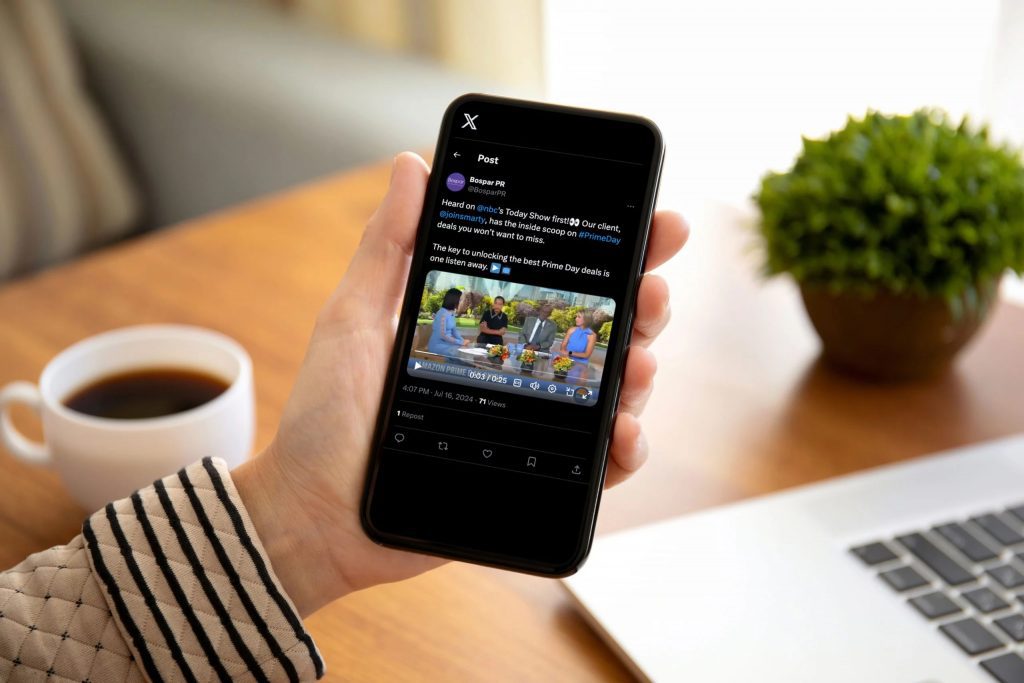“How are you doing?”
If I asked this during a meeting, you would likely say:
- Good.
- Fine.
- Well… And you?
That’s sooooo milquetoast it might as well have come from ChatGPT.
This typically unconsidered question gives you the opportunity to be authentic and interesting and set the agenda for your meeting.
From a PR perspective, we use a softball question like “How are you doing?” as a chance to put in more effort, peacock a little and go beyond what’s expected.
But while not everything needs a PR perspective, this approach could help you drive a meeting, reframe a discussion or give you the opportunity to get something off your chest.
Here are a few ways we put this into practice at Bospar:
Lead with “so what” responses
When we’re developing a PR strategy at Bospar, we like to lead with the expression: “So what?”
What we mean is why should people care? What’s relevant and timely about a client’s company, product or market? What makes what they’re doing different from everyone else? What is going to grab attention?
We approach “How are you doing?” the same way. If a client poses this question, our thought process is to mention news that they should be reacting to or share anything else we think is relevant for them to know. If we’re just answering with “Good, how are you?” we’re only blending in with the crowd, not saying anything noteworthy or different.
PR experts must create the “so what” when meeting with clients or prospects. We’re the experts, after all! We need to show that we’re doing our homework – even when we’re not assigned any. To achieve public relations success for clients, we must show that we care.
Treat regular meetings like meetings with journalists
Client and prospect meetings are prep for meetings with journalists. But most of us don’t treat meetings like that, as evidenced by how we respond to “How are you doing?”
This really bugs me because this is a moment to set the agenda and the tone. And if we don’t do it during regular calls, then how can we expect to do it when meeting with journalists?
If a journalist were to ask me, “How are you doing?” I’d think about how I was doing and connect it to a story I wanted to tell versus not. When a client asks the same question in a meeting, our team sees it as an opportunity to show that we’re thinking in an interesting and memorable way.
Tailor your response to the audience
To make the biggest impact in media relations, it’s important to tailor messaging to a specific audience. The same PR strategy should be taken when answering “How are you doing?”
If a new prospect asks how I’m doing, I might say, “I’m celebrating one of our best media wins!” By doing that, the new prospect now knows the traction that our team is making for other clients, which would make them more eager to work with us and achieve the same PR success!

If a journalist asks me how I’m doing, I might say, “I’m thinking about this story you could tell for a client that could be really fascinating.” When we do this, we’re literally helping out a reporter by coming up with an angle for them and offering the client to flesh it out, making it easier to write a story.
With both examples, I’m making sure my response is relevant to the audience to whom I’m speaking for the greatest impact.
Another way we tailor responses is through the news we share with clients.
At Bospar, we serve many different domains — from healthcare to AI and data analytics to real estate. When talking to clients or prospects in those industries, it’s best practice to scan relevant news and messaging to share.
For instance, Business Insider just published this article: 10 of America’s most affordable retirement spots, where the weather is good and healthcare is top-notch. This is something we’d ask real estate clients or prospects for their perspective on, demonstrating our proactiveness in finding stories that will resonate.
Just do it (with help from social media)
To take a page from Nike’s book, sometimes you have to just do it. But often we respond with “I’m good” or “Not much, what’s up with you?” because that’s what we’re comfortable with.
We don’t want to rock the boat with anything beyond that. But sometimes, we need to rock the boat, especially in PR! It takes a bit of courage and effort, but it’s easier to do than ever thanks to social media.
People are always interested in themselves, and nearly everyone has a digital footprint for us to know what they’re thinking. Our team uses this to our advantage so we’ll always have something we can react to.
Before a client or prospect meeting, our Bospar team browses a client or prospect’s LinkedIn, Facebook or Twitter (now X) feeds to see what they’re posting, commenting on and reacting to. Then we mention it during the call.
So if we’re talking to a healthcare client, we’ll say something as simple as, “I’m still thinking about that Tweet you posted about CNN’s recent AI healthcare in Asia story. I thought it was fantastic.” That way, we show that we’re interested in what they’re saying and prove our value as a public relations partner.
Final thoughts
PR experts don’t have to give boring responses to “How are you doing?”
Let’s avoid them if we can!
We can connect with each other in many ways besides merely saying, “I’m good.”
I encourage you to try it!
Because when people ask, “How are you doing?” they’re really asking, “How valuable am I to you?”
The more thoughtfully we answer, the more successful we can be in PR, work and even life itself!




